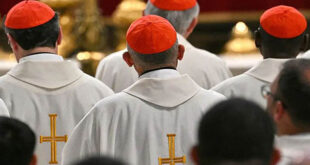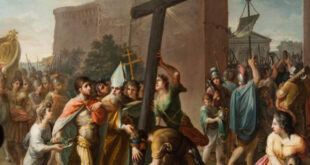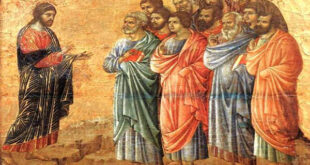The Second Vatican Council (1962-1965) was one of the most significant milestones in the history of the Catholic Church. Convened by Pope Saint John XXIII, this council aimed to renew the Church in order to respond better to the challenges of the modern world. However, since its conclusion, Vatican II has been the subject of intense debates within the Catholic community. For some, it was a source of vitality and renewal; for others, a moment of rupture and confusion. This article will explore the historical roots of these controversies, their theological relevance, and how today’s Catholics can approach this issue with wisdom, fidelity, and charity.
A Brief History of the Second Vatican Council
The Second Vatican Council was the twenty-first ecumenical council of the Catholic Church. Saint John XXIII, by calling for it, expressed his desire for an “aggiornamento,” an updating of the Church. This did not mean abandoning Tradition, but rather making it more understandable and accessible to modern man. Over four sessions, with the participation of more than 2,500 bishops from around the world, the council produced 16 documents, including constitutions, decrees, and declarations.
Among the most notable texts are:
- Sacrosanctum Concilium: On liturgical reform.
- Lumen Gentium: On the nature of the Church.
- Dei Verbum: On divine revelation.
- Gaudium et Spes: On the relationship between the Church and the contemporary world.
These works reflect a desire for dialogue with modernity, but they have also been the source of divergent interpretations.
The Roots of the Controversies
The disputes surrounding the Second Vatican Council arise not so much from the conciliar texts themselves but from their interpretation and subsequent application. Below are the main areas of controversy:
1. The Liturgy
The liturgical reform was one of the most visible aspects of Vatican II. The introduction of the vernacular languages in the Mass and changes to the Tridentine Rite generated tensions. Some Catholics believe these reforms have enriched the participation of the faithful, while others perceive them as a loss of sacredness and liturgical continuity.
2. Ecumenism
The Council promoted a more open dialogue with other Christian denominations and religions, which generated both hope for some and unease for others. While some see this approach as an expression of evangelical charity, others fear that it compromises Catholic doctrine.
3. Authority in the Church
The constitution Lumen Gentium emphasized the role of the “People of God” and episcopal collegiality, balancing papal authority. However, some interpret this as a weakening of the Pope’s role, sparking debates about the hierarchical structure of the Church.
4. The Spirit of the Council
A major source of confusion has been the so-called “spirit of the Council,” a phrase used to justify changes that often go beyond what the conciliar documents actually propose. This phenomenon has caused tensions between those seeking a strict textual interpretation and those promoting a more “progressive” application.
Theological Relevance of the Debate
The Second Vatican Council was not a rupture with Tradition, but a deepening of it. The Church, guided by the Holy Spirit, is a living organism that responds to the challenges of each era without renouncing its essence. It is important to understand that true renewal involves fidelity to Christ and the deposit of faith, not accommodation to the fashions of the world.
The papal magisterium that followed, from Pope Paul VI to Pope Francis, has emphasized that Vatican II must be interpreted in continuity with Tradition. Pope Benedict XVI spoke of a “hermeneutic of reform in continuity,” a phrase that invites us to see the Council as a bridge, not a break.
Practical Applications for Catholics
- Solid Formation
It is essential to read the documents of Vatican II attentively and consult reliable sources for their interpretation. Understanding the history and content of the Council helps us discern between its authentic teachings and distortions. - Charity in Debate
Internal controversies should not divide us. As Catholics, we are called to live in unity. Saint Augustine put it well: “In essentials, unity; in doubtful matters, liberty; in all things, charity.” - Rediscovering the Liturgy
The Mass, in any of its forms, is the heart of our faith. Participating with reverence and deepening our understanding of its meaning helps us live our Christian vocation more fully. - Being Witnesses in the World
The Council calls us to be light and salt in the world. This means living our faith coherently, without falling into extremes or compromises with values contrary to the Gospel.
Final Reflection
The controversies surrounding the Second Vatican Council reflect a broader challenge: how to remain faithful to the Gospel in a constantly changing world. This debate should not discourage us but rather encourage us to deepen our faith. The Church, founded by Christ, is guided by the Holy Spirit, even in the midst of difficulties. In the end, our goal is not to win debates, but to attain holiness and guide others toward it.
May this reflection inspire us to always seek the truth, love the Church, and live as authentic disciples of Christ, offering our differences as an opportunity to grow in unity and charity.







One comment
Pingback: The Multifaceted Challenges Facing Pope Leo XIV - Efetobor Great's Blog